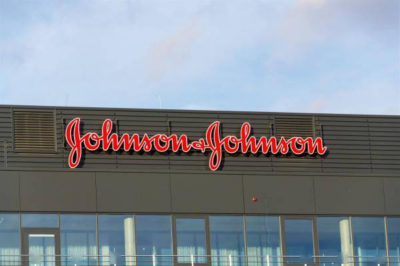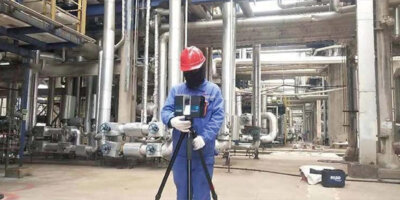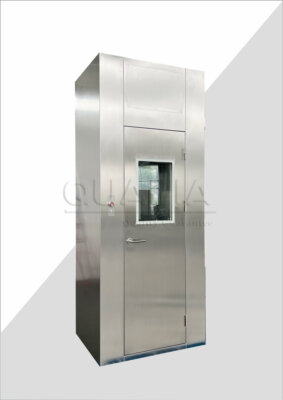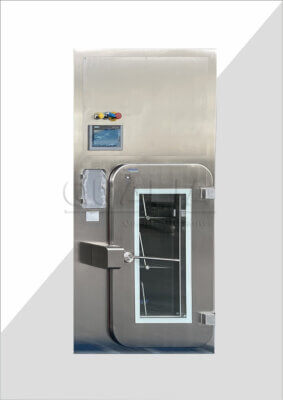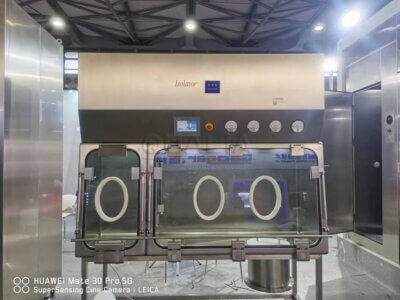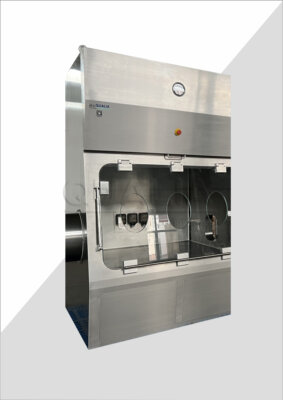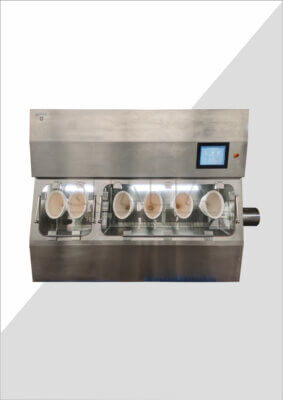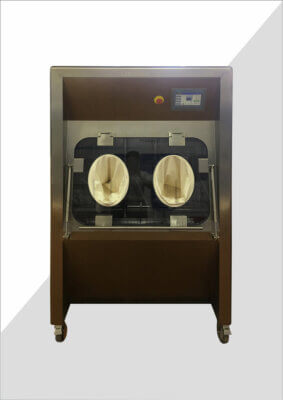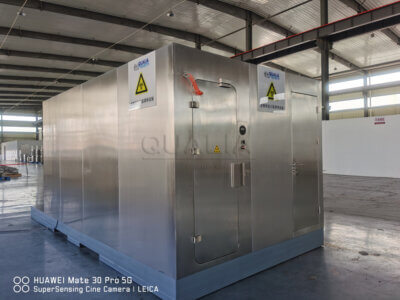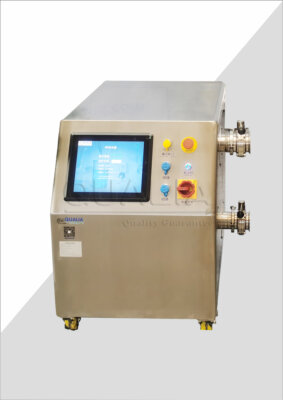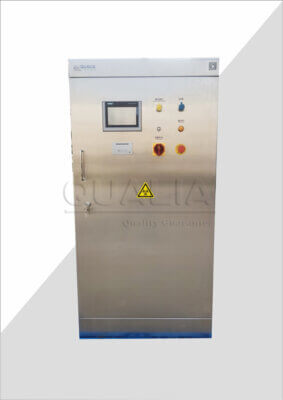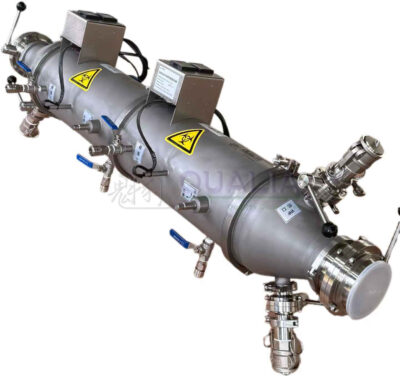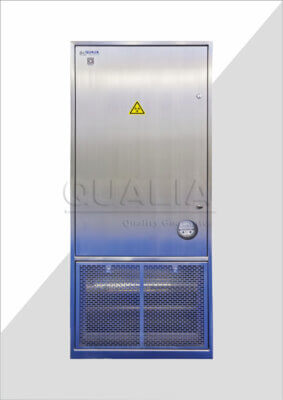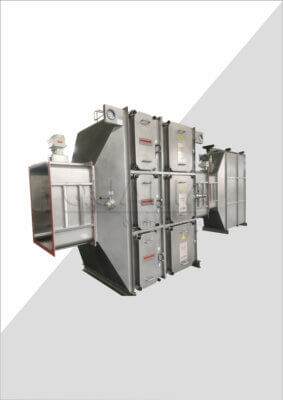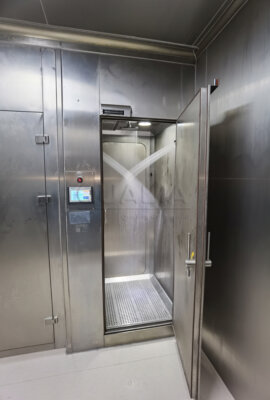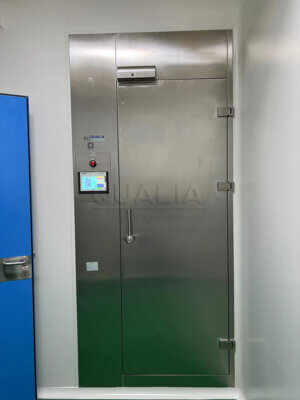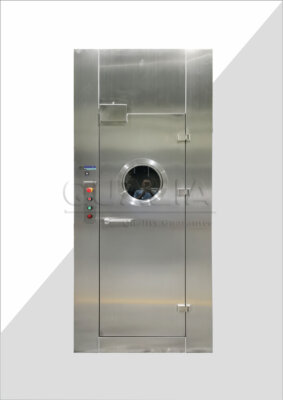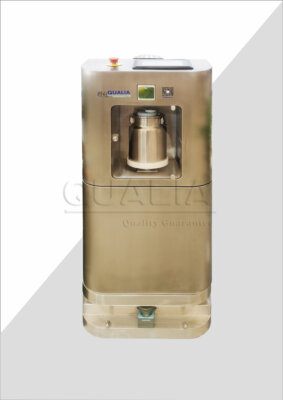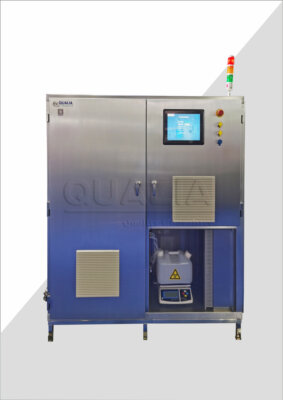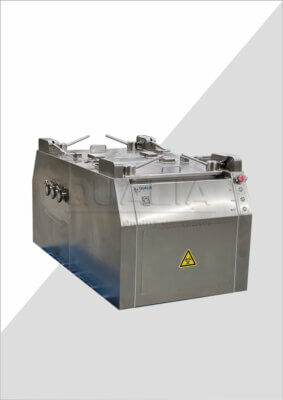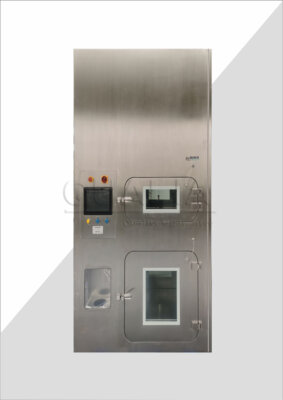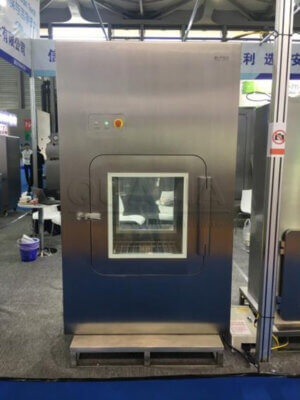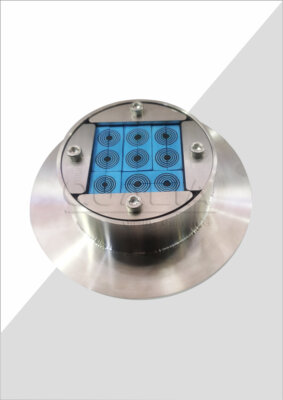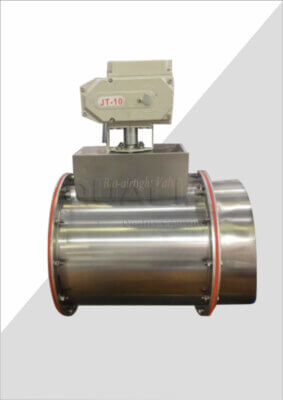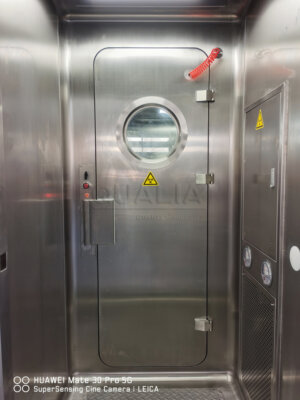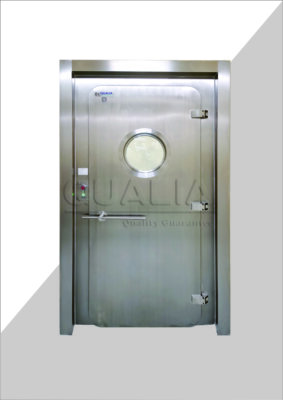When laboratory operations demand absolute containment integrity, the choice of compatible APR door sealing systems becomes critical to both safety and operational efficiency. Recent industry data indicates that over 40% of containment failures in high-security facilities stem from inadequate door sealing compatibility, resulting in costly downtime and potential safety violations. The complexity of matching pneumatic sealing systems with existing infrastructure often leaves facility managers struggling with technical specifications, installation requirements, and long-term reliability concerns.
The consequences of selecting incompatible sealing systems extend far beyond immediate installation challenges. Facilities face regulatory compliance issues, increased maintenance costs averaging 60% higher than properly matched systems, and potential contamination risks that can compromise years of research investment. The financial impact alone—with emergency retrofits costing upwards of $50,000 per door—makes compatibility decisions particularly crucial for budget-conscious operations.
This comprehensive guide addresses these challenges by providing detailed apr door compatibility information, cross-reference charts, and expert insights that enable informed decision-making. You’ll discover proven compatibility assessment methods, technical specifications for seamless integration, and practical solutions that ensure your containment systems meet both current needs and future expansion requirements.
What Are APR Door Sealing Systems and Why Does Compatibility Matter?
APR (Air Pressure Relief) door sealing systems represent a sophisticated approach to maintaining controlled environments in laboratories, cleanrooms, and containment facilities. These systems utilize pneumatic pressure differentials to create hermetic seals, preventing air exchange between controlled and uncontrolled spaces. QUALIA Bio-Tech has observed that properly configured APR systems can achieve containment levels exceeding 99.9% efficiency when compatibility factors are correctly addressed.
The fundamental principle involves controlled air pressure manipulation across door thresholds, creating positive or negative pressure zones as required by specific applications. Unlike traditional mechanical seals that rely solely on physical compression, APR systems dynamically adjust to environmental conditions, maintaining consistent performance regardless of temperature fluctuations or structural settling.
Core Components of APR Sealing Systems
Modern APR door sealing systems integrate several critical components that must work in harmony for optimal performance. The primary elements include pneumatic actuators, pressure sensors, control valves, and specialized sealing membranes designed for specific containment applications. Each component requires precise calibration to ensure system-wide compatibility and reliable operation.
The control system serves as the brain of the operation, continuously monitoring pressure differentials and adjusting pneumatic inputs accordingly. Industry research from containment specialists indicates that systems with advanced control algorithms demonstrate 35% better long-term reliability compared to basic on/off pneumatic controls. This sophisticated approach enables real-time compensation for varying environmental conditions and operational demands.
Critical Compatibility Factors
Pneumatic seal cross reference requirements extend beyond simple dimensional matching. Pressure ratings, response times, and environmental compatibility all influence system integration success. The operating pressure range typically spans 0.5 to 15 PSI, though specific applications may require custom pressure profiles to achieve desired containment levels.
Material compatibility represents another crucial consideration, particularly in chemical processing environments where seal materials must resist aggressive compounds while maintaining flexibility and durability. Temperature ranges, chemical exposure profiles, and mechanical stress factors all contribute to compatibility assessment requirements.
How to Assess Door Seal Compatibility for Your Facility
Compatibility assessment begins with comprehensive evaluation of existing infrastructure, operational requirements, and regulatory compliance needs. The process requires systematic analysis of multiple factors that influence system integration success and long-term performance reliability.
A thorough facility assessment should document current door specifications, including frame dimensions, hardware configurations, and existing sealing arrangements. This baseline information enables accurate compatibility determination and identifies potential integration challenges before installation begins.
Technical Specification Analysis
Critical measurements include door frame tolerances, available pneumatic supply pressure, and electrical power requirements for control systems. Frame tolerances typically must fall within ±2mm for standard APR systems, though custom solutions can accommodate wider variance ranges when necessary.
The pneumatic supply analysis examines available air pressure, volume capacity, and quality requirements. Clean, dry air at consistent pressure is essential for reliable operation, with most systems requiring minimum 20 PSI supply pressure to maintain adequate sealing force across varying environmental conditions.
| Compatibility Factor | Standard Range | Critical Tolerance |
|---|---|---|
| Frame Width | 800-1200mm | ±2mm |
| Supply Pressure | 20-100 PSI | ±5% |
| Response Time | 2-8 seconds | ±1 second |
| Temperature Range | -10°C to +60°C | ±5°C |
Environmental Condition Evaluation
Environmental factors significantly impact door seal compatibility assessment outcomes. Temperature fluctuations, humidity levels, and chemical exposure profiles all influence material selection and system configuration requirements. Facilities operating in extreme conditions may require specialized sealing materials or enhanced control systems to maintain reliable performance.
In our experience working with pharmaceutical manufacturing facilities, temperature cycling between production and cleaning operations creates particular challenges for seal material durability. Systems designed for these applications typically incorporate temperature-resistant compounds and enhanced flexibility to accommodate thermal expansion cycles.
Door Seal Compatibility Chart: Cross-Reference Guide
Systematic compatibility assessment requires structured comparison of system specifications against facility requirements. The following comprehensive chart provides reference points for common APR door configurations and their compatibility parameters.
Standard Configuration Compatibility Matrix
| Door Type | Frame Material | Seal Type | Pressure Range | Response Time |
|---|---|---|---|---|
| Single Swing | Aluminum | Inflatable | 0.5-8 PSI | 3-5 seconds |
| Double Swing | Steel | Blade | 1-12 PSI | 2-4 seconds |
| Sliding | Stainless Steel | Tube | 0.8-10 PSI | 4-6 seconds |
| Pass-Through | Composite | Hybrid | 0.5-15 PSI | 2-8 seconds |
The compatibility matrix demonstrates how different door configurations require specific sealing approaches to achieve optimal performance. Single swing doors typically offer the most straightforward installation process, while sliding doors may require additional considerations for lateral sealing integrity.
Application-Specific Requirements
Interchangeable sealing systems provide flexibility for facilities with diverse containment needs. However, interchange ability depends on several factors including mounting hardware, control system compatibility, and operational pressure requirements. Research indicates that standardized mounting interfaces can reduce installation time by up to 40% while improving long-term maintainability.
Specialized applications such as biosafety laboratories or pharmaceutical manufacturing often require custom sealing solutions that exceed standard compatibility parameters. These systems may incorporate multiple sealing stages, enhanced monitoring capabilities, or specialized materials to meet stringent regulatory requirements.
What Installation Challenges Should You Anticipate?
Installation complexity varies significantly based on facility infrastructure, door configuration, and integration requirements. The most common challenges involve pneumatic supply routing, control system integration, and coordination with existing building automation systems.
Pneumatic supply installation often requires routing compressed air lines through existing wall cavities or overhead spaces. This process can be complicated by structural limitations, code compliance requirements, and the need to maintain system pressure integrity throughout the distribution network.
Common Installation Obstacles
Frame modification represents a frequent challenge, particularly in retrofit applications where existing door frames weren’t designed for pneumatic sealing systems. Standard modifications typically involve precise machining of seal mounting channels and integration of pneumatic supply connections without compromising structural integrity.
The electrical integration aspect often proves more complex than anticipated, especially when coordinating with existing access control systems or building automation networks. Compatible control interfaces must accommodate various communication protocols while maintaining safety interlocks and emergency operation capabilities.
“The key to successful APR installation lies in thorough pre-installation planning and coordination with all affected building systems. Rushing the integration process invariably leads to compatibility issues that are expensive to resolve after installation.” – Senior Applications Engineer, Containment Systems Division
Mitigation Strategies
Professional installation teams typically employ systematic approaches to minimize compatibility challenges. Pre-installation site surveys identify potential obstacles, allowing proactive solutions rather than reactive problem-solving during active installation phases.
The pneumatic seal installations process benefits significantly from modular component design that enables staged installation with minimal operational disruption. This approach allows facility operations to continue while installation progresses, reducing overall project impact.
How to Maintain Cross-Reference Compatibility Over Time
Long-term compatibility maintenance requires proactive monitoring, preventive maintenance, and systematic component replacement strategies. The dynamic nature of pneumatic sealing systems means that compatibility can drift over time without proper attention to system parameters.
Regular calibration of pressure sensors and control valves ensures that sealing forces remain within specified ranges, maintaining both performance and component longevity. Industry data suggests that facilities implementing quarterly calibration schedules experience 50% fewer compatibility-related failures compared to those using annual maintenance intervals.
Preventive Maintenance Protocols
Systematic maintenance protocols should address both mechanical and electronic components to preserve overall system compatibility. Seal inspection schedules typically range from monthly visual checks to quarterly detailed examinations, depending on operational intensity and environmental conditions.
Electronic component maintenance focuses on control system calibration, sensor verification, and communication interface testing. These systems require specialized diagnostic equipment and trained personnel to maintain optimal performance levels throughout their operational lifespan.
| Maintenance Task | Frequency | Critical Parameters |
|---|---|---|
| Seal Inspection | Monthly | Visual damage, flexibility |
| Pressure Calibration | Quarterly | ±2% accuracy |
| Control System Test | Bi-annually | Response time, accuracy |
| Complete System Audit | Annually | All specifications |
Upgrade Pathway Planning
APR door compatibility guide principles suggest that system upgrades should follow planned obsolescence schedules rather than reactive replacement strategies. This approach ensures compatibility maintenance while incorporating technological improvements and regulatory updates.
Future-proofing strategies often involve selecting systems with expandable control capabilities and standardized interfaces that accommodate evolving facility requirements. The investment in compatible, upgradeable systems typically pays dividends through reduced long-term maintenance costs and improved operational flexibility.
What Are the Latest Developments in APR Door Sealing Technology?
Technological advancement in APR door sealing systems continues to focus on improved compatibility, enhanced performance, and simplified installation processes. Recent developments include smart control systems with predictive maintenance capabilities and modular designs that facilitate easy integration with existing infrastructure.
The integration of IoT sensors and cloud-based monitoring systems enables real-time performance tracking and predictive maintenance scheduling. These systems can identify compatibility issues before they result in seal failures, allowing proactive intervention that prevents costly downtime and potential containment breaches.
Smart Control Integration
Advanced control systems now incorporate machine learning algorithms that adapt to facility-specific operating patterns, optimizing sealing performance while minimizing energy consumption. These intelligent systems can automatically adjust pressure profiles based on environmental conditions, door usage patterns, and containment requirements.
The compatibility benefits of smart control systems extend beyond basic operation to include seamless integration with building automation networks, security systems, and emergency response protocols. This holistic approach ensures that APR door sealing solutions function as integral components of comprehensive facility management systems.
Future Compatibility Considerations
Emerging regulatory requirements and evolving industry standards continue to influence APR door sealing system design and compatibility parameters. Forward-thinking facilities should consider these trends when selecting systems to ensure long-term compliance and operational viability.
The trend toward standardized interfaces and modular designs suggests that future compatibility challenges will focus more on software integration and communication protocols rather than mechanical interface issues. This shift emphasizes the importance of selecting systems with robust, standardized control platforms that can accommodate future technological developments.
Conclusion
Successful implementation of compatible APR door sealing systems requires comprehensive understanding of technical specifications, installation requirements, and long-term maintenance considerations. The key insights from this analysis emphasize the critical importance of thorough compatibility assessment, professional installation practices, and proactive maintenance strategies in achieving optimal system performance.
The door seal compatibility chart and cross-reference guidance provided here offer practical tools for facility managers to make informed decisions about system selection and integration. By addressing compatibility factors systematically, facilities can avoid costly mistakes while ensuring reliable containment performance that meets both current needs and future requirements.
For facilities planning APR door sealing installations, the recommended next steps include conducting comprehensive site assessments, consulting with experienced installation professionals, and developing long-term maintenance protocols that preserve system compatibility over time. Consider engaging with specialized containment system providers who can provide tailored solutions that address your specific compatibility requirements and operational constraints.
The future of APR door sealing technology promises continued improvements in compatibility, performance, and integration capabilities. Facilities that invest in well-designed, professionally installed systems today will be well-positioned to adapt to evolving industry requirements and technological advances.
What specific compatibility challenges does your facility face, and how might these solutions address your unique operational requirements?
Frequently Asked Questions
Q: What is an APR door sealing system, and why is compatibility important?
A: An APR (Airtight Pressure Resistant) door sealing system is designed to create a high-integrity barrier against air leakage, critical in environments like biosafety labs, cleanrooms, and pharmaceutical facilities. Compatibility matters because not all sealing systems work with every door frame or application. Using compatible APR door sealing systems ensures optimal performance, safety, and regulatory compliance, while mismatched systems can lead to leaks, contamination risks, and failed inspections. A cross-reference guide helps you match the right seal to your specific door type and operating conditions.
Q: What are the main types of Compatible APR Door Sealing Systems available?
A: The two primary types of compatible APR door sealing systems are:
- Pneumatic Seals: These use compressed air to inflate a gasket around the door perimeter, providing exceptional airtightness ideal for high-traffic or high-containment areas. They are often used where frequent access and uncompromised seal integrity are required.
- Mechanical Seals: These rely on physical compression (via a handle or lever) to press a gasket against the frame, offering a fail-safe seal that doesn’t depend on external power. They are best suited for lower-traffic environments where electrical reliability is a concern.
Both systems are available in various materials (like stainless steel, EPDM, or silicone) to suit different applications and door constructions.
Q: How do I use a Cross-Reference Guide to select the right Compatible APR Door Sealing System?
A: A cross-reference guide simplifies the selection process by matching your door’s specifications—such as frame material, size, and intended use—to compatible sealing systems. Start by identifying your door’s make, model, and operating environment. Then, consult the guide to see which seal types (pneumatic or mechanical), materials, and configurations are recommended. Pay attention to details like pressure resistance, seal dimensions, and integration with existing door hardware. This method ensures you choose a system that meets both performance needs and safety standards.
Q: What should I consider when upgrading or replacing an existing APR door seal?
A: When upgrading or replacing a seal, consider these factors:
- Seal Type: Decide between pneumatic and mechanical based on your facility’s needs—pneumatic for high traffic/containment, mechanical for reliability during power outages.
- Material Compatibility: Ensure the new seal material is compatible with your door frame and can withstand cleaning agents, temperature extremes, and wear.
- Installation Requirements: Check if the new seal requires modifications to the door or frame, and whether professional installation is needed.
- Regulatory Compliance: Verify that the replacement seal meets relevant industry standards for airtightness and safety.
Using a cross-reference guide streamlines this process by highlighting compatible options that fit your exact requirements.
Q: Can Compatible APR Door Sealing Systems be customized for unique applications?
A: Yes, many manufacturers offer customization for compatible APR door sealing systems to address unique challenges such as unusual door sizes, special material requirements, or integration with advanced control systems. Custom options might include tailored seal profiles, specialty gasket materials, or integration with smart monitoring systems for real-time seal integrity checks. Always discuss your specific needs with the supplier and refer to a cross-reference guide to ensure the custom solution maintains compatibility with your existing door infrastructure.
Q: How do I maintain and troubleshoot Compatible APR Door Sealing Systems for long-term performance?
A: Regular maintenance is key to ensuring long-term performance of compatible APR door sealing systems. Follow these steps:
- Inspect Seals: Check for wear, cracks, or deformation regularly, and replace seals as needed.
- Clean Gaskets: Use approved cleaners to prevent material degradation and maintain seal flexibility.
- Test Operation: For pneumatic systems, verify air pressure and deflation/inflation timing; for mechanical systems, ensure handles compress the seal fully.
- Monitor Alarms: If your system includes pressure or status alarms, test them periodically to catch issues early.
Troubleshooting tips include checking for air leaks (listen for hissing sounds), ensuring power supply (for pneumatic systems), and verifying that all mechanical components move freely. A cross-reference guide can also help identify common issues and compatible replacement parts.
External Resources
- NATIONAL INDUSTRIAL SEALS CATALOG – The Timken Company – This PDF catalog provides technical details, dimensions, and interchange options for industrial door sealing systems, assisting users in finding compatible alternatives.
- SKF Seals Master Interchange – This cross-reference guide enables fast conversion of door seal numbers across various manufacturers to SKF equivalents, supporting compatibility checks and selection.
- Timken Seal Interchange and Cross Reference Guide – This guide lists manufacturer part numbers with their Timken equivalents, designed to help identify and select compatible sealing systems efficiently.
- A Simple Guide To Weatherstripping Terms – Steele Rubber Products – This article explains various door seal terminologies and applications, making it easier to understand compatibility in automotive sealing solutions.
- Car Weather Stripping Replacement Guide – Seashore Rubber – This resource details how to remove, clean, and replace car door and window sealing systems, discussing types and compatibility considerations.
- Car Weather Stripping: A Basic Guide – Seashore Rubber – This basic guide explores different vehicle door and window seal strips, helping users cross-reference and select the right options for their needs.
Related Contents:
- What Are APR Door Pneumatic Seals and How They Work
- Understanding Pneumatic APR Door Seal Technology
- Pneumatic Seal APR Doors: Complete Guide to Industrial Applications
- APR Door Sealing Systems | Pneumatic Technology Overview
- Food Industry APR Door Sealing | Sanitary Design | Compliance
- Best APR Door Pneumatic Seal Suppliers | Vendor Selection Guide
- Pneumatic APR Door Seal Performance Metrics | Technical Specifications
- APR Door Pneumatic Seal Installation | Maintenance | Troubleshooting
- Manufacturing APR Door Seal Systems | Industrial Applications

